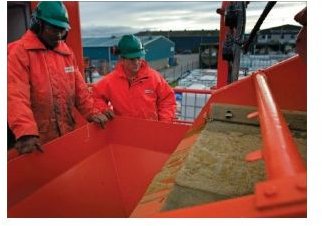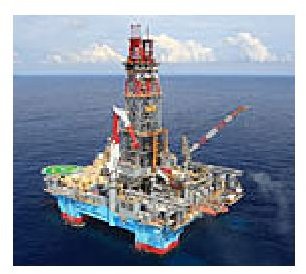Wellbore Construction Drill-in Fluids - Types and When to Use
Introduction to Drill-in Fluids for Wellbores
In the offshore oil and gas industry, drill-in fluids perform a major role in the drilling of reservoir wells, providing the hydrostatic pressure required for safe and efficient drilling of the various wells. The fluids are stored on board the drilling rig and are recycled and reused after treatment.
This is an article on drilling for hydrocarbons and the fluids used. We begin by examining the different types of fluids used in drilling exploration, injection, and production wells.
Types of Drill-in Fluids for Hydrocarbon Wellbores
Drilling fluids used in drilling wells into hydrocarbon reservoirs have been used since the early 1900’s. In those days the fluids were predominately a mixture of water and native mud, which was benign to the onshore or offshore environment.
With wells becoming deeper and drills rotating faster, a more technical formula was required. New fluids were developed to meet these more demanding conditions.
These fluids were a mixture of oil, polymers, and chemicals that proved to be detrimental to the environment.
This prompted a succession of increasingly stringent measures by various bodies to ensure that the drilling fluids had minimal impact on the environment and to encourage the use of environmentally friendly drilling muds and their additives.
There are numerous types of drilling fluids in use on drilling rigs today; the most common ones are examined below.
1. Water Based Mud. (WBM)
This consists of a mixture of water and local mud, or mud with additives such as sodium or calcium bentonite. This mud is often referred to on the rigs as gel, as when static it sets like a gel, and when pumped again returns to the original working fluid state.
2. Oil Based Mud (OBM) and Synthetic Oil Based Mud (SBM)
OBM consists of a base of petroleum liquid such as diesel mixed with the mud that is formed per the water based system. Oil based mud can also be formed by using synthetic oils (SBM) and is very common on offshore drilling rigs as it maintains the properties of hydrocarbon-based mud, but emits less toxic fumes. This is especially important in a confined space such as the drill platform.
3. Gaseous Fluid
This can consist of a number of gases; compressed air and CO2 are popular gaseous fluids when formed from a mixture of water and a foam inducing polymer.
Main Functions of the Drill-in Fluids Used in Offshore Oil and Gas Drilling Rigs
Drilling fluids are stored aboard the drilling rig in mud pits and are injected through the drill string from which it ejects from nozzles integral to the drill bit as a spray, consequently cleaning and cooling the bit in the process.
The mud then carries the cuttings up the space between the drill string and the wellbore, up through a steel casing to the rig deck. Here the cuttings are removed by being passed through a shaker and mesh filters, with the treated mud being returned to the mud pits. The cuttings are stored for future disposal.

The main functions of the drill-in fluids are as follows:
- Helping prevent blow-outs.
- Maintaining a cooling influence and lubrication to the rotating drill bit and drill string.
- Removal of drill cuttings by circulating them back to the drill platform.
- Formation of hydrostatic pressure that prevents the ingress of formation fluids to the well bore. Formation fluids are the fluids present in the surrounding rock being drilled, many of which are both corrosive and erosive and undesirable to the drilling process. If the formation pressure is very low, air, gaseous, or foam fluids can be used as too high a pressure/density of the drilling fluid can cause the formation to fracture.
- Support for the drill string when adding another section of pipe. The mud will gel when static and this augments the derrick in supporting the string in various operations.
Drill-in Fluids for Specific Applications
- Water Based Mud
Used throughout the offshore oil and gas industry as a drilling fluid for numerous applications where the cooling of the drill bit is required rather than lubrication. Also used where low pressure formation is being drilled through due to low density of fluid.
- Oil Based Mud.
Used where extra lubrication of the drill bit and string is required, mainly when drilling wells at an angle or horizontally. It is also used where high temperatures are present.
Advantages and disadvantages of using Oil Based Mud and Water Based Mud
Advantages of OBM
- Improved Lubrication and anticorrosive properties (to drill bit).
- Maintains formation at high temperatures.
Disadvantages of OBM
- Can cause toxic fumes that affect the drilling team.
- Can be very high density/pressure and cause damage to well bore/surrounding formation.
- Can cause damage to environment through pollution.
Advantages of WBM
- Non-use of hydrocarbons reduces impact on environment.
- Viscosity easily controlled.
- Density easily controlled for low pressure formation well drilling.
- Drill chips easier removed from fluid at shakers.
Disadvantages of WBM
- Not as an efficient lubricant as OBM
- Can promote corrosion to drill bit.
- Not efficient at high temperatures.
- Does not carry drill chips to the surface as efficiently as OBM.
Reference Webs:
4. Maersk
